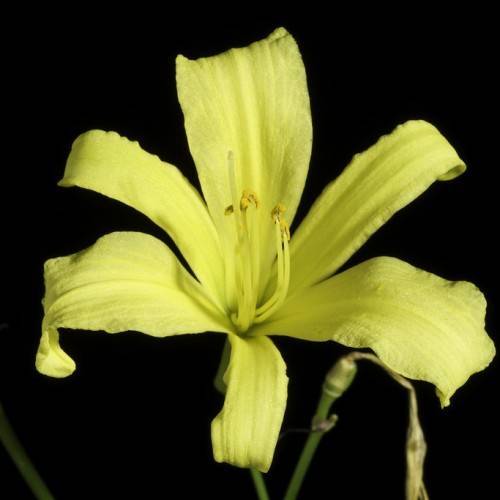
citron daylily
Hemerocallis citrina
Cycle:
Herbaceous Perennial
Watering:
Average
Hardiness Zone:
3 - 9
Flowers:
Flowers
Sun:
Full sun,part shade
Leaf:
Yes
Growth Rate:
Low
Maintenance:
Low
Drought Tolerant:
Yes
Salt Tolerant:
Yes
Care Level:
Medium
watering
The citron daylily should be watered about twice a week, allowing the soil to dry out between 2 waterings. During the hottest part of the summer, it may need to be watered more frequently. Make sure to water the plant early in the day so that the plant has time to dry out before nightfall. Water the plant at its base - never from the top - and making sure not to splash water onto the foliage to prevent disease. Ensure the soil remains moist, but not soggy. Discontinue watering when temperatures begin to cool off in the fall and wait to water the plant again in the early spring when temperatures start to warm up.
sunlight
The citron daylily requires full sun for at least 6 hours a day. It is best to place the plant in an area of the yard that is exposed to direct sunlight throughout the day. During the peak of the summer, it is important to ensure that the daylily is getting the correct amount of sunlight in order to bloom properly. If the daylily does not receive enough sunlight during the summer, the blooms may be smaller and delayed in their opening. Additionally, the plant may fail to produce as many blooms.
pruning
Citron daylily (Hemerocallis citrina) should be pruned twice a year in late winter/early spring and late summer/early fall for best results. In late winter or early spring, wait until the plant has sprouted and remove any dead foliage. Cut off any thin stalks and flower heads that are present, leaving no more than 1 third of the original stems. This will help encourage taller, healthier growth and more blooms throughout the summer. In late summer or early fall, lightly prune the foliage back once it begins to yellow. This will enhance the plant’s ability to store and absorb enough nutrients to successfully endure the winter months and prevent too much leaf dieback. Cut off the old flower heads and any dead or damaged foliage. Do not prune too much, as the plant needs as many leaves as possible to keep the roots healthy and produce energy during the winter.
